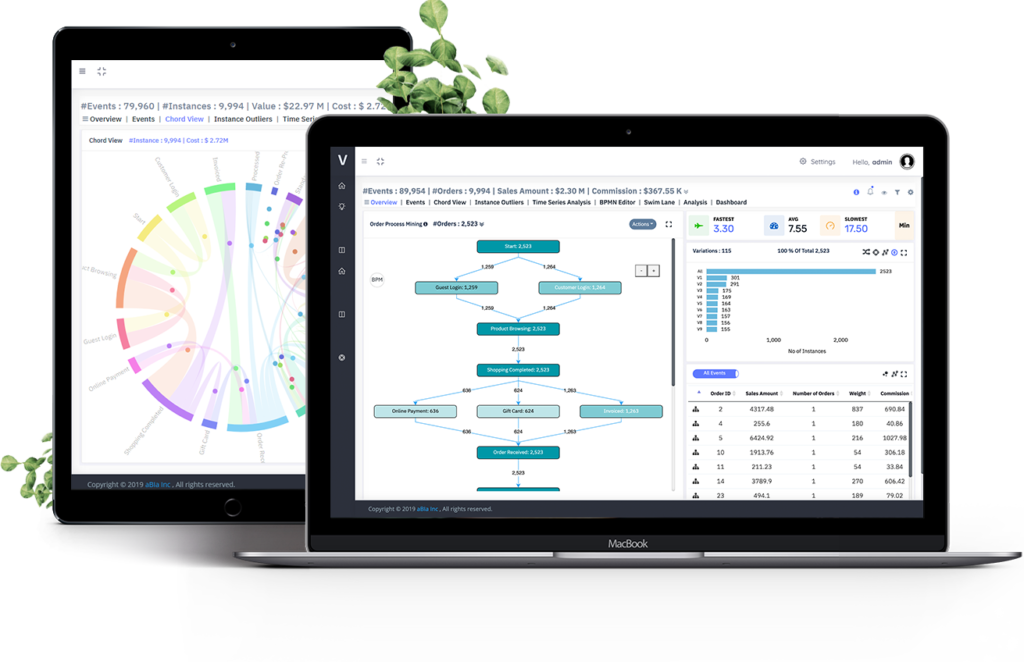What is Process Observability?
Process observability is a modern approach to monitoring and understanding the internal workings of business processes through their external outputs. It involves collecting data from various parts of a system—such as logs, metrics, and traces—to gain insights into its performance and health.

Understanding Process Observability
Process observability is the capability to acquire a clear view of the internal states of a system’s processes through its external outputs. In other words, it’s about having the visibility and understanding of what’s happening within the systems that drive a business, in real-time. It’s like having a crystal ball that reveals the inner mechanisms of a complex clock—not by opening it up, but by interpreting the movements and sounds it makes.
But what exactly does it mean, and how does it differ from related concepts like process mining?


At its core, observability is about three key data types:
Metrics: Numerical values that represent the health and performance of a system over time.
Logs: Immutable records that detail events or changes within a system.
Traces: Representations of a system’s operation or the journey of a transaction or task through various services.
These elements enable IT professionals and business analysts to detect, diagnose, and respond to issues, often before they impact the user experience or operational efficiency.
Why Process Observability Matters
Process observability goes beyond mere process discovery and analysis. ViVE provides a holistic view of your business processes, encompassing not only the steps and interactions within the process but also the underlying systems, data sources, and external factors that influence the process’s performance
This end-to-end visibility empowers organizations to
Identify hidden bottlenecks and inefficiencies
Understand the root causes of process issues
Predict and prevent potential problems
Optimize resource allocation and improve efficiency
Ensure compliance with regulations and standards
WHY PROCESS OBSERVABILITY
Navigating the Inner Workings of System Processes
In today’s digital world, the ability to monitor, understand, and optimize processes is paramount to operational efficiency and success. This is where the concept of ‘process observability’ enters the stage—a term that’s gaining traction in the realms of IT operations, system engineering, and business process management.

While process mining and ViVE process observability share the common goal of improving process performance, ViVE Process Observability is different from traditional process mining in several ways:
- Soundness: ViVE does not require any statistical algorithms. This means that ViVE can provide a 100% accurate view of your processes, without any bias or data elimination.
- Efficiency and effectiveness: ViVE does not require the three steps of discovery, conformance checking, and model enhancement. This means that you can get started with ViVE quickly and easily, without having to invest a lot of time and resources.
- Completeness: ViVE delivers holistic process insights by effortlessly handling complex, large-scale data from multiple systems and platforms. This means ViVE excels in managing processes that are large-scale, complex, with multitude of activities

Implementing Process Observability
Achieving effective process observability involves several steps:
Instrumentation
This is the first step where you embed observability infrastructure into your systems to collect metrics, logs, and traces
Integration
Collating the data from various sources in a coherent manner that can be easily analyzed.
Analysis
Utilizing AI and machine learning tools to sift through data, identify patterns, and predict potential issues.
Visualization
Creating dashboards that help stakeholders understand the status and health of their processes in an intuitive manner.
Response
Developing mechanisms to respond to the insights gained, whether through automated systems or manual intervention.

Re-vive Excellence
Don’t let the lack of transparency into your processes lead to an irreversible waste of resources.
Don’t let the lack of transparency into your processes lead to an irreversible waste of resources.

More About Process Observability
Explore more about how Process Observability is changing the paradigm of the process efficiency world




